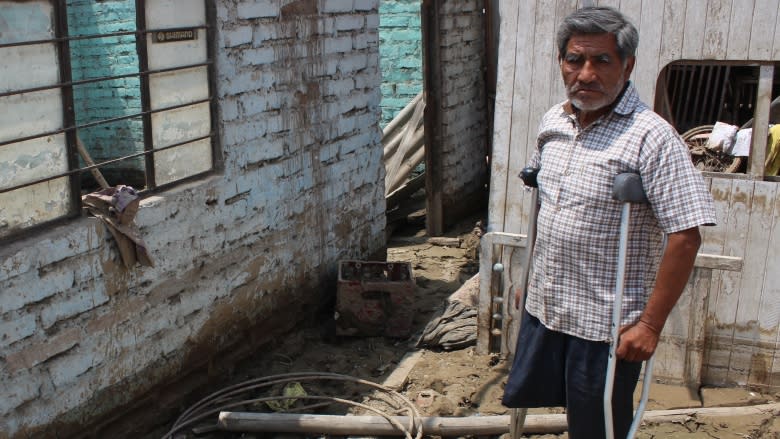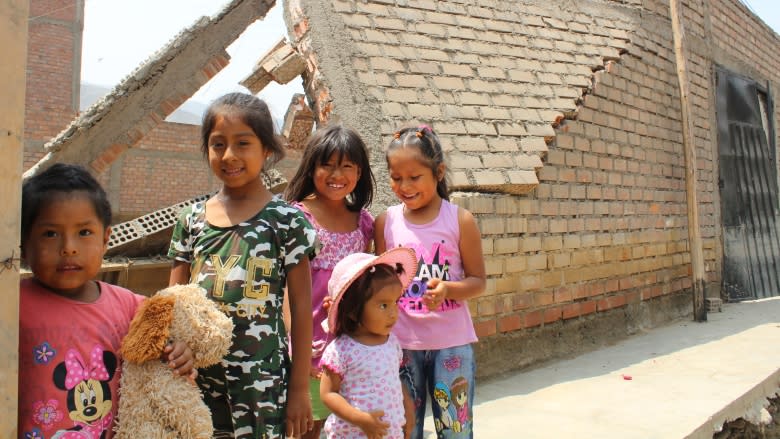Homeless Peru flood victims pose a growing problem
Wading through the ankle-deep mud and debris in Carapongo, a grindingly poor suburb of Peru's capital Lima, is hard enough for most.
But for amputee José Marco Sedano, whose prosthetic leg was swept away in the unprecedented flooding ravaging the Andean nation, it is now close to impossible.
"I don't know what I am going to do," says Sedano, 66, who scrapes out a living as a taxi driver, with his battered old Toyota automatic, supplemented by subsistence agriculture, rearing chickens, sheep and pigs.
"With the leg, I was able to work. Without it I can't even get around. I am not used to this. It is uncomfortable for me. I want work, not handouts."
Built on some of Lima's cheapest land, beside the Huaycoloro River, Carapongo has been one of the worst affected neighbourhoods in the capital. Hundreds of families here, like Sedano's, are living in tents, without electricity, running water or sewage systems after the river suddenly burst its banks two weeks ago at the start of the rains.
The flooding has destroyed nearly 200,000 homes so far this year.
The death toll has risen to 98, while nearly another million people have been severely affected. A total of 2,625 km of roads and 242 bridges have also been swept away.
The flooding has been triggered by what scientists are calling a "coastal El Nino," a localized area of unusually warm water just off Peru's Pacific shore.
Some areas have seen more rain in just a few days than they would normally receive in a decade. The result has been small rivers suddenly filling with raging torrents of water and bursting their banks.
Meanwhile, many cities on the coastal plain in northern Peru, including Trujillo, Chiclayo and Piura, the country's second, fifth and eighth largest population centers respectively, have been immersed in water up to neck-deep.
Rescuers including the police and military are working around the clock to remove stranded locals from their roofs and get food, water and medicines to isolated communities.
In one village, Monte Sullón, people who had been without supplies for 48 hours mobbed an air force helicopter carrying emergency relief, forcing the pilot to quickly switch off the rotors to avoid a tragedy.
Experts from SENAMHI, Peru's meteorological institute, say the Pacific is starting to cool again but that the rains and flooding will likely continue until mid-April.
The issue has also highlighted the need for Peru to improve its climate preparedness. Most of the most severely affected are the poor, who have been allowed to occupy marginal areas of land beside river banks and even in gulches which, although bone dry most of the time, are known to be prone to sudden and extreme flooding every few decades.
That includes the country's inadequate infrastructure, already under the spotlight as prosecutors here investigate the sprawling corruption scandal involving Odebrecht, the Brazilian construction giant that won some $25 billion of public contracts in Peru over the last three decades.
That point was made by President Pedro Pablo Kuczynski who has noted: "The bridges that were built in the 18th Century are still standing and those that were built in the last few years are falling down."
The response from his administration has been swift, with the president and his ministers fanning out to affected areas across the country and personally directing the relief effort.
They are also now starting to plan long-term reconstruction for the devastated areas.
For Sedano, though, the focus is more immediate.
He and his extended family, from parents-in-law in their late 70s to five grandkids, including twin 13-month-old boys, are now sleeping in tents on their 3,000-square-metre plot of land.
Sedano lost his leg in a hit-and-run accident in 1997. Then, the rest of his family pitched in to allow him to buy the prosthetic.
"I don't see them doing that now," he says. "How can they when this misfortune has befallen us all, not just me?"
As he talks, he shows me the remains of what was once his bedroom. Thick mud carpets the floor while the corrugated plastic roof has been removed to allow the sun to dry out the modest property.
"I built this place with my own hands," Sedano says.
"I can start again from scratch, but we will need some help from the government. Otherwise, we will end up begging."




